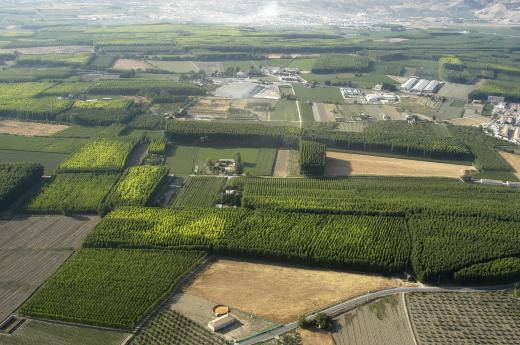A greenfield site is an area of land that has never been developed or built up. Greenfield sites are often found in urban areas, providing a stark contrast to the heavily developed surrounding locale. Some greenfield sites have previously been used for agricultural purposes, but most are fields or vacant lots that provide a small bit of wilderness in urban or suburban landscapes.
Greenfield sites are often mentioned in contrast with brownfield sites. A brownfield site is a formerly developed plot of land that has been allowed to return to nature through disuse, decay, or the removal of developed additions. Brownfield sites are often distinguished by remaining evidence of development, such as paved areas.

A greenfield site can be an important part of an urban landscape. In areas where playgrounds are scare, vacant greenfield lots can serve as alternative adventuring grounds, dog parks, and even party sites. While many greenfield sites are privatized and access is forbidden, some are on public land and can be easily visited. Since greenfield sites are usually completely undeveloped, many become ersatz gardens for local wildflowers and trees. In addition to providing an unmaintained park atmosphere, trees and plants growing in a greenfield site can help decrease urban pollution and increase healthy air circulation.

The term greenfield site has gained common usage in a variety of areas, from software to wireless technology. In industrial terminology, greenfield status describes the recovery of land that was previously used for industrial pursuits. When a mine or plant closes, some governing bodies require that the land be closely monitored and cared for until a healthy local ecosystem develops. The process of returning the land to a natural state is sometimes referred to as greenfielding.
In the development of wireless engineering, existing greenfield sites became extremely important during the end of the 20th century. The undeveloped nature of a greenfield site became a greatly desired location for cellular towers as usage of wireless technology exploded. A greenfield site network is a term used to refer to wireless systems that were built without using existing infrastructure and rely on new transmission towers built in greenfield land.
Greenfield may be used to describe any type of construction from scratch that does not depend on pre-existing structures. In software, greenfield programs are those which are built using entirely new code. Sales, investment, and marketing industries may also refer to an untapped market as a greenfield site. The term has become a common description for anything natural and untouched, and is frequently used metaphorically rather than literally.

